
Imagine a local coffee shop in a bustling city that competes against giants like Starbucks and Costa Coffee.
One morning, the shop owner notices a social media trend celebrating “National Coffee Day.”
She quickly posts an offer for free coffee to the first 50 customers who mention the hashtag on the shop’s social media page.
The post goes viral, drawing a crowd that boosts sales and wins her loyal customers.
This is the power of moment marketing.
In today’s digital world, leveraging real-time events and trends isn’t just for big brands – it’s a game-changer for your small business/enterprise.
Moment marketing allows you to level the playing field, creating impactful connections and driving engagement.
But what is moment marketing, and how can small businesses use it to compete with industry giants?
In this blog, we’ll explore the essence of moment marketing, its benefits, and strategies to help small businesses make a big impact.
Whether you’re a shop owner or an entrepreneur, it’s time to embrace key moments and turn them into growth opportunities.
What is Moment Marketing?
Moment marketing is the practice of leveraging current events, trending topics, or popular cultural moments to engage with your audience in real time.
It involves creating timely, relevant content that resonates with what people are talking about or experiencing at a particular moment.
This approach taps into the immediacy of social media and other digital platforms, allowing businesses to join conversations as they happen and make a memorable impact.
For small businesses, moment marketing is a powerful tool that can level the playing field with larger competitors.
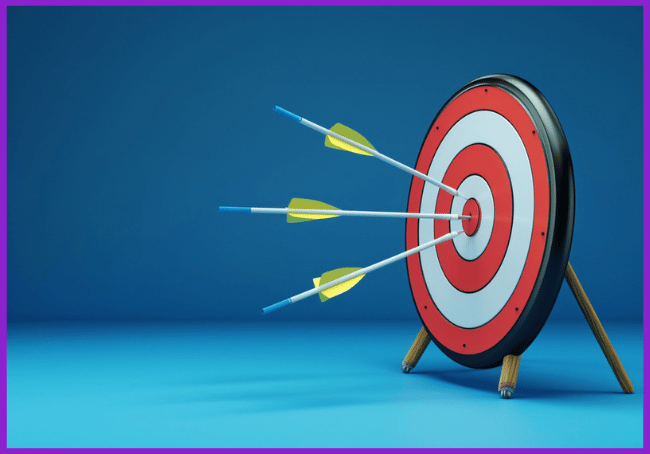
By staying agile and responsive, you can capitalize on fleeting opportunities to connect with your target audience, drive engagement, and enhance visibility for your small business.
Whether it’s a viral social media trend, a local event, or a national celebration, moment marketing enables businesses to be part of the dialogue and create meaningful, real-time interactions with their customers.
Why Moment Marketing is Crucial for Your Small Business?
1. Captures Attention in a Crowded Market
In a world saturated with advertising, moment marketing cuts through the noise by being timely and relevant.
It grabs the attention of target audience when they are most engaged with a particular topic or event.
2. Builds Authentic Connections
Moment marketing allows you to engage with their audience on a personal level.
By participating in real-time conversations and events, you can create authentic interactions that foster stronger relationships with their customers.
3. Maximizes Limited Resources
Small businesses often operate with constrained marketing budgets.
Moment marketing is a cost-effective strategy that leverages existing trends and events, reducing the need for extensive financial investment while still achieving high impact.
4. Enhances Brand Relevance and Agility
Being responsive to current events and trends keeps your small business relevant and top-of-mind.
It demonstrates agility, showing that the business is active, aware, and engaged with its community and industry.
5. Boosts Engagement and Visibility
Well-timed content related to trending topics or events can quickly go viral, significantly increasing your business’s visibility and engagement.
This rapid boost can lead to increased brand recognition and customer interest.
6. Drives Customer Loyalty and Trust
By consistently participating in relevant moments, small businesses can build trust and loyalty.
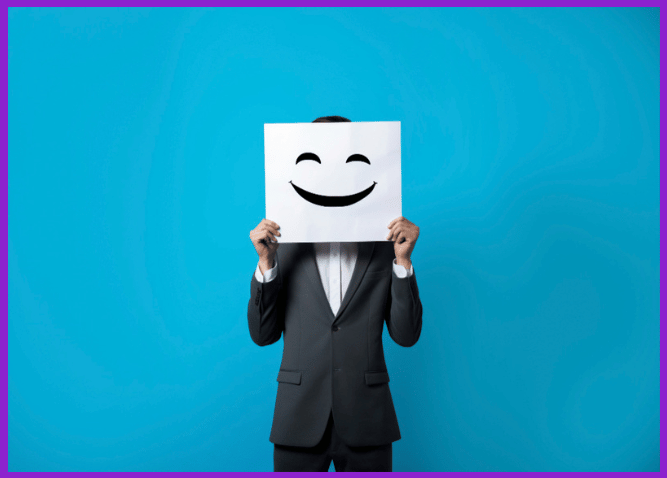
Customers appreciate brands that are responsive and engaged with the same events and trends they care about.
7. Provides Competitive Advantage
Many larger competitors may not be as nimble in their marketing efforts.
Small businesses can leverage their agility to quickly adapt to trends and events, gaining a competitive edge in capturing audience attention.
8. Encourages Community Involvement
Moment marketing often involves local events and trends, helping your small business become more embedded in your community.
This local focus can strengthen community ties and support.
Types of Moment Marketing That Can Be Leveraged by Small Businesses
By understanding and leveraging these types of moment marketing, small businesses can effectively engage with their audience, stay relevant, and create memorable connections that drive growth and brand success.
1. Real-Time Marketing
Involves responding to current events or trending topics as they happen.
Example: A bakery quickly posting about a local sports team’s victory and offering a celebratory discount on themed pastries.
2. Event-Based Marketing
Focuses on leveraging planned events such as holidays, festivals, or local happenings.
Example: A bookstore promoting a special sale during National Book Week or hosting a reading event in conjunction with a local literary festival.
3. Trend-Based Marketing
Capitalizes on popular social media trends or viral challenges.
Example: A fitness studio creating a workout challenge that ties into a viral fitness trend, encouraging followers to participate and share their progress online.
4. Seasonal Marketing
Aligns marketing efforts with the changing seasons or seasonal activities.
Example: A clothing boutique launching a spring collection with vibrant, timely content about spring fashion trends. Or, a homestay offering “Summer by the Beach” package that include beach gear rentals or local attraction tickets.
5. Cultural Moments
Taps into significant cultural or societal events and movements.
Example: A coffee shop creating a special blend in honor of International Women’s Day and sharing stories of influential women in the community.
6. User-Generated Moments
Engages with user-generated content that aligns with a current trend or event.
Example: A restaurant encouraging customers to share their dining experiences during a popular food festival using a specific hashtag, then reposting their content.
5 Examples of How Big Brands Successfully Utilized Moment Marketing
These examples demonstrate how big brands effectively use moment marketing to create impactful, timely campaigns that resonate with their audience, drive engagement, and boost visibility.
Oreo: Dunk in the Dark
Event: Super Bowl XLVII Blackout
Strategy: During the unexpected blackout at the 2013 Super Bowl, Oreo quickly tweeted, “You can still dunk in the dark,” with an image showing an Oreo in dim light.
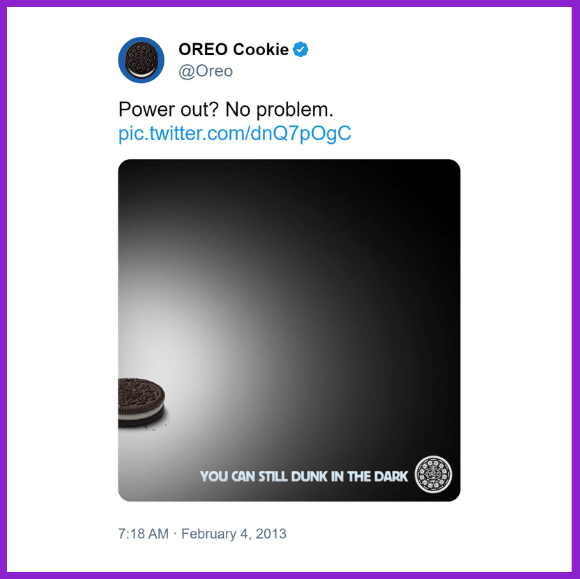
This real-time response gained massive traction on social media, showcasing Oreo’s agility and creativity in capitalizing on a live event.
Impact: The tweet went viral, generating over 15,000 retweets and substantial media coverage, solidifying Oreo’s reputation for witty and timely marketing.
Zomato: Rahul Bose’s Banana Incident
Event: Rahul Bose’s Viral Video about Overpriced Bananas
Strategy: After actor Rahul Bose posted a video about being charged Rs. 442 for two bananas at a luxury hotel, Zomato cleverly tweeted that their banana milkshake and banana split cost less than what Bose paid for two bananas.
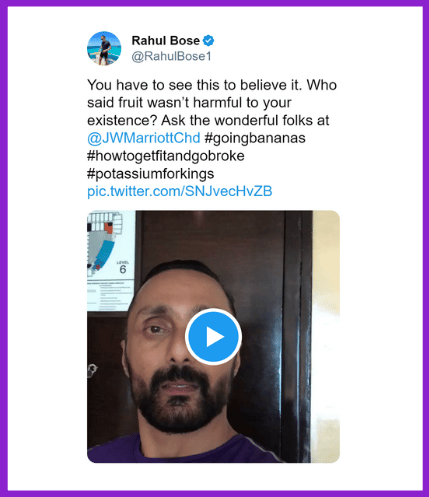
This humorous take quickly went viral.
Impact: The campaign highlighted Zomato’s value proposition in a relatable and timely manner, boosting engagement and visibility on social media.
Chipotle: #GuacDance Challenge
Event: National Avocado Day
Strategy: Chipotle launched the #GuacDance challenge on TikTok to celebrate National Avocado Day, encouraging users to dance for free guacamole.
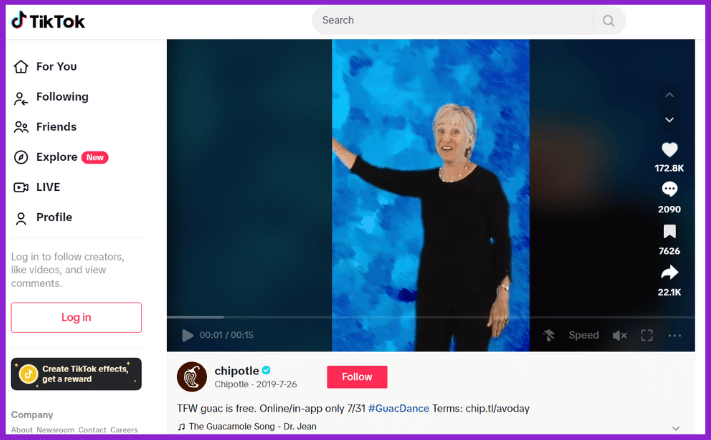
The campaign engaged users with fun, user-generated content.
Impact: The challenge resulted in over 430 million video starts in six days, significantly boosting Chipotle’s digital sales and brand engagement.
Uber: Thank You for Not Riding
Event: COVID-19 Pandemic
Strategy: During the early days of the pandemic, Uber launched a campaign thanking people for staying home and not using their service, while offering free rides to healthcare workers and free meals to first responders.
Impact: This campaign demonstrated Uber’s social responsibility, earning positive attention and strengthening customer loyalty during a challenging time.
KitKat: Space Jump Campaign
Event: Felix Baumgartner’s Stratos Jump
Strategy: To support Felix Baumgartner’s record-breaking space jump, KitKat sent a chocolate bar into space the day before his jump. This playful support aligned with their “Have a break” slogan.
Impact: The campaign drew significant media coverage and public interest, effectively associating KitKat with a historic moment and enhancing brand visibility.
What Small Businesses Can Learn from these Examples?
By learning from the above examples, you can effectively implement moment marketing strategies to connect with your target audience, drive engagement, and compete with larger brands.
1. Be Agile and Responsive
Lesson: Oreo’s quick reaction to the Super Bowl blackout illustrates the importance of being agile and ready to respond in real time.
Small businesses can emulate this by staying alert to current events and trends and having a strategy in place to capitalize on these moments promptly.
Action: Set up a dedicated team or individual to monitor trends and events. Use tools like Google Trends or social media alerts to stay updated and ready to act quickly.
2. Leverage Humor and Relatability
Lesson: Zomato’s witty response to Rahul Bose’s banana price incident shows how humor can create a strong connection with the audience.
Humor, when used appropriately, makes your brand relatable and memorable.
Action: Understand your audience’s sense of humor and use it to craft responses or campaigns that resonate with them.
Ensure that the humor aligns with your brand’s voice and values.
3. Utilize User-Generated Content
Lesson: Chipotle’s #GuacDance challenge on TikTok demonstrates the power of user-generated content (UGC) in driving engagement.
Encouraging customers to create content not only boosts interaction but also spreads your message organically.
Action: Launch challenges or campaigns that invite customers to share their experiences with your product.
Promote these initiatives on social media and reward participants to encourage more contributions.
4. Show Social Responsibility
Lesson: Uber’s “Thank You for Not Riding” campaign during the COVID-19 pandemic highlights the value of social responsibility.
Showing that your business cares about the community can strengthen customer loyalty and brand image.
Action: Identify ways your business can support the community, especially during crises.
Whether through donations, services, or supportive messaging, demonstrate your commitment to societal well-being.
5. Capitalize on Major Events
Lesson: KitKat’s campaign during Felix Baumgartner’s space jump shows how aligning with major events can elevate your brand’s visibility.
Associating your brand with widely watched events helps in reaching a broader audience.
Action: Plan marketing activities around major local, national, or global events that align with your brand.
This could include holidays, sports events, or significant cultural moments.
Recommended Tools for Keeping Up with Current Trends and Events
This table provides a comprehensive overview of various tools that small businesses can use to stay informed about current trends and events, ensuring they can effectively leverage moment marketing strategies.
| Tool name | Type | Highlight Features | Pricing Model |
| Hootsuite | Social Media Monitoring | Multi-account management, social listening, analytics | Premium |
| Sprout Social | Social Media Monitoring | Brand mentions tracking, keyword tracking, detailed analytics | Premium |
| Mention | Social Media Monitoring | Web and social media monitoring, real-time alerts, detailed analytics | Premium |
| Brand24 | Social Media Monitoring | Real-time internet monitoring, analysis of mentions across various platforms | Premium |
| Keyhole | Social Media Monitoring | Hashtag and keyword tracking, audience engagement insights | Premium |
| Google Trends | Trend Analysis | Compare search terms, track popularity over time, regional interest analysis | Free |
| BuzzSumo | Trend Analysis | Content discovery, influencer identification, trend tracking | Premium |
| TrendWatching | Trend Analysis | Trend reports, consumer behavior insights | Premium |
| Feedly | Content Curation | Aggregates news, blogs, and publications, customizable feeds | Freemium |
| Content Curation | Save articles and videos, personalized recommendations | Free | |
| Content Curation | Personalized magazine, follow topics and influencers | Free | |
| Google Alerts | News and Alerts Services | Email notifications for new content related to specified keywords | Free |
| Talkwalker Alerts | News and Alerts Services | Real-time alerts for keywords, comprehensive analytics | Freemium |
| Awario | News and Alerts Services | Social media, blogs, and web monitoring, real-time alerts | Premium |
| Industry Forums/Communities | Participate in relevant subreddits, gain insights from discussions | Free | |
| Quora | Industry Forums/Communities | Follow industry-related topics, gain insights from questions and answers | Free |
| Semrush | Competitor Analysis | Track competitor strategies, SEO, PPC, content marketing analysis | Premium |
| Ahrefs | Competitor Analysis | Competitor backlinks, keywords, content performance analysis | Premium |
| Moz | Competitor Analysis | SEO strategy tracking, keyword rankings, backlink profiles | Premium |
| SimilarWeb | Competitor Analysis | Website traffic insights, user engagement metrics, marketing strategies | Premium |
| Vertex, Zapier, Relevance.ai | AI Agents for task automation | Optimize campaigns, create personalize content, analyze data, etc | Freemium |
Make sure the tools you add in your martech stack are well-integrated and won’t bloat your overall budget.
Tips on Creating Compelling Content That Resonates with the Moment
Creating content that aligns with current trends and events can significantly boost engagement and visibility for your small business.
The content can be blogs, memes, GIFs, short-form yet entertaining videos, or infographics as well.
Here are some tips to help you craft compelling content that resonates with the moment:
1. Stay Authentic to Your Brand Voice
Ensure your content reflects your brand’s voice and values. Authenticity helps in building trust and a loyal customer base.
Create content that your audience can relate to, making it more likely for them to engage and share.
2. Be Timely and Relevant
Respond quickly to trending topics or events. Use any of the tools mentioned in the previous section to stay informed.
Ensure the content is relevant to your audience and the event. Connect the trend or event to your small business brand in a meaningful way.
3. Use Visuals and Multimedia
Use high-quality images, videos, GIFs, and infographics to make your content more engaging and shareable.
Consider live streaming on platforms like YouTube, Facebook Live or Instagram Live to interact with your audience in real-time during an event.
4. Leverage User-Generated Content
Invite your audience to create content related to a trending topic or event, such as sharing photos, videos, or stories.
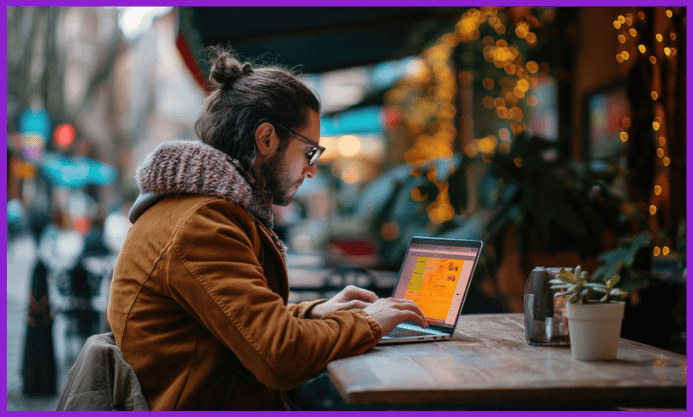
Share user-generated content on your platforms to increase engagement and build a sense of community.
5. Create Emotionally Resonant Content
Craft content that evokes emotions such as happiness, nostalgia, or inspiration.
Emotional content is more likely to be shared and remembered.
Use storytelling techniques to create a narrative around the trending event or topic, making it more engaging and impactful.
6. Incorporate Humor and Wit
Use humor to make your content stand out. A witty or funny take on a trending topic can make your content more memorable and shareable.
Incorporate cultural references or memes that your audience is familiar with to increase relatability and engagement.
7. Engage with Your Audience
Use polls, quizzes, and questions to engage your audience and encourage participation.
Actively engage with comments and feedback to build a stronger connection with your audience and show that you value their input.
8. Optimize for Each Platform
Tailor your content to fit the style and audience of each social media platform. What works on Instagram might differ from what works on Twitter or LinkedIn.
Use relevant hashtags and keywords to increase the discoverability of your content on social media and search engines.
9. Collaborate with Nano-Influencers
You can collaborate with nano-influencers (also known as nano-creators) for creating content for your brand.

For a small business, they are easily approachable (compared to their bigger counter parts) and they possess a niche-focused yet highly engaging audience you can target.
10. Leverage Local Events and Community Moments
Bigger brands have a hard time to track local events and community moments or they just focus on country-specific or global-level topics or events.
But that is not for your small business. Also, it is easier to connect with local community (where your business operates) by leveraging local trending topics and events.
11. Measure and Adapt
Use analytics tools to track the performance of your content. Most social media platforms have in-built (and free) analytic tools to measure the performance of your posts.
Pay attention to metrics such as engagement, reach, and conversions.
Analyze what worked and what didn’t, and adapt your future content strategies accordingly to improve performance and relevance.
Remember to stay authentic, be timely, and continuously adapt your strategies based on feedback and performance data.
Recommended Tools for Quick and Effective Content Creation
Here’s a table with recommended tools for quick and effective content creation, including their type, key features, and whether they offer freemium or premium options.
| Tool Name | Tool Type | Highlight Features | Pricing Model |
| Canva | Graphic Design | Drag-and-drop interface, extensive template library, collaboration features | Freemium |
| Adobe Spark | Graphic & Video Creation | Customizable templates, easy-to-use, integrates with Adobe products | Freemium |
| Piktochart | Infographic Design | Data visualization templates, easy customization, interactive charts | Freemium |
| Lumen5 | Video Creation | AI-driven video creation, customizable templates, social media integration | Freemium |
| Snappa | Graphic Design | High-resolution stock photos, customizable templates, direct social media sharing | Freemium |
| Crello | Graphic & Animated Design | Animation tools, rich template library, user-friendly interface | Freemium |
| Renderforest | Video Creation | Explainer videos, intros and animations, logo creation | Freemium |
| InVideo | Video Creation | Pre-made templates, text-to-video, extensive media library | Freemium |
| Animoto | Video Creation | Drag-and-drop video builder, pre-built storyboards, customizable templates | Freemium |
These tools offer a mix of graphic, video, and social media content creation options, providing a variety of features to suit different needs.
Many of these tools offer freemium versions, which are great for small businesses to start with, while premium versions unlock more advanced features.
Few Precautions to Take When Leveraging Moment Marketing
By keeping these precautions in mind, small businesses can successfully leverage moment marketing without risking their reputation or alienating their audience.
Ensure Relevance: Align your moment marketing with your brand values and target audience. Engaging with irrelevant trends can confuse your audience and dilute your brand identity.
Be Sensitive and Respectful: Avoid controversial topics and be aware of cultural nuances. Ensure your content is respectful and appropriate to avoid alienating or offending your audience.
Verify Facts and Sources: Double-check facts and sources before sharing content. Inaccurate information can damage your credibility, so rely on reputable sources.
Timing is Key: Act quickly but ensure your content is well thought out and polished. Balancing planned content with reactive marketing helps avoid appearing outdated or overwhelming your audience.
Avoid Over-commercialization: Focus on providing value rather than overt promotion. Authentic engagement is more effective than a hard sell, ensuring your participation feels genuine.
Monitor and Respond to Feedback: Actively monitor audience response and engage with feedback. Positive engagement boosts campaigns, while addressing negative feedback promptly mitigates issues.
Legal and Ethical Considerations: Ensure content complies with copyright laws and necessary permissions are obtained. Adhering to local regulations and advertising standards helps avoid legal issues.
10 Examples of Small Businesses That Successfully Leveraged Moment Marketing
These examples demonstrate how small businesses can effectively use moment marketing to capture attention, drive engagement, and boost their visibility by aligning their marketing efforts with current events, trends, and popular cultural moments.
1. Denny’s Diner
Event: X (Twitter) Trend
Strategy: Denny’s Diner cleverly jumped on popular Twitter (X) trends with humorous and timely tweets.
One notable instance was their tweet during a viral conversation about the “zoom in” feature on images, where they posted a zoom-in meme on a pancake image.
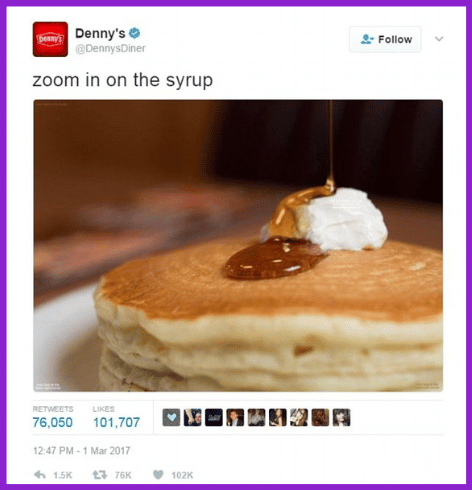
This playful and timely interaction led to high engagement and visibility.
2. Salt & Straw Ice Cream
Event: Seasonal Holidays and Local Events
Strategy: This artisanal ice cream shop regularly creates limited-time flavors tied to local events and seasonal holidays.
For instance, they introduced Halloween-themed ice cream flavors that became a hit, drawing in crowds excited to try the unique offerings.
Their seasonal, event-based marketing keeps their brand fresh and relevant.
3. Cheeky Panda
Event: Earth Day
Strategy: The eco-friendly tissue brand Cheeky Panda utilized Earth Day to promote their sustainable products.
They launched a campaign highlighting their commitment to environmental causes, which resonated well with eco-conscious consumers and boosted their brand’s visibility and sales.
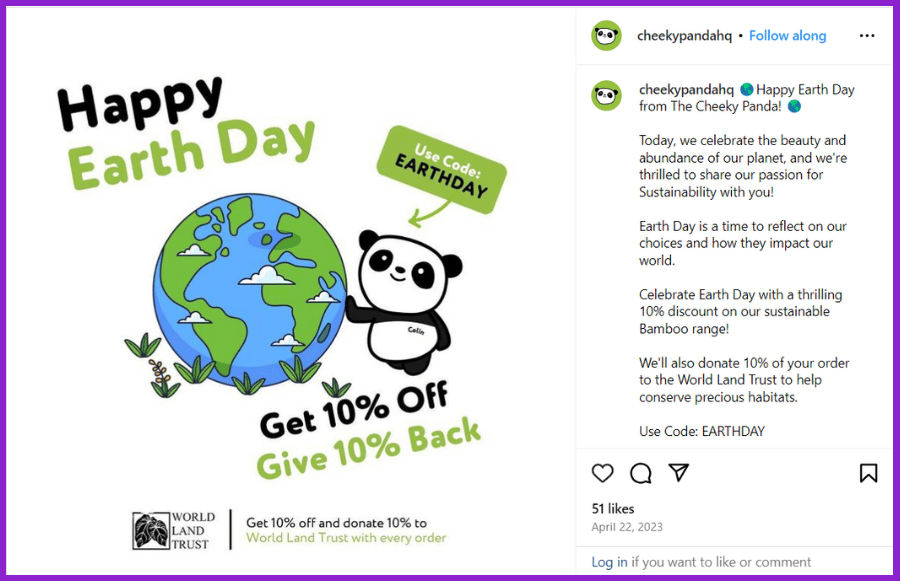
4. The Penny Hoarder
Event: National Doughnut Day
Strategy: The personal finance website, The Penny Hoarder, created content around where to get free doughnuts on National Doughnut Day.
This timely and relevant content drove massive traffic to their site, as people searched for doughnut deals, showcasing the effectiveness of aligning content with trending events.
5. Alamo Drafthouse Cinema
Event: Popular TV Show Finale
Strategy: To capitalize on the buzz around the finale of “Game of Thrones,” Alamo Drafthouse hosted themed viewing parties and special events.
This not only drew in fans of the show but also created a memorable experience that strengthened customer loyalty and generated significant social media buzz.
6. Humane Society Silicon Valley
Event: “Pokémon Go” Craze
Strategy: During the height of the “Pokémon Go” craze, Humane Society Silicon Valley (a non-profit animal shelter organization) invited players to walk shelter dogs while playing the game.
This innovative approach tied into the popular trend, increased foot traffic to their shelters, and helped their animals get exercise and visibility.
7. Blaze Pizza
Event: Pi Day (March 14)
Strategy: Blaze Pizza, a small chain known for its customizable pizzas, leveraged Pi Day by offering pizzas for $3.14.
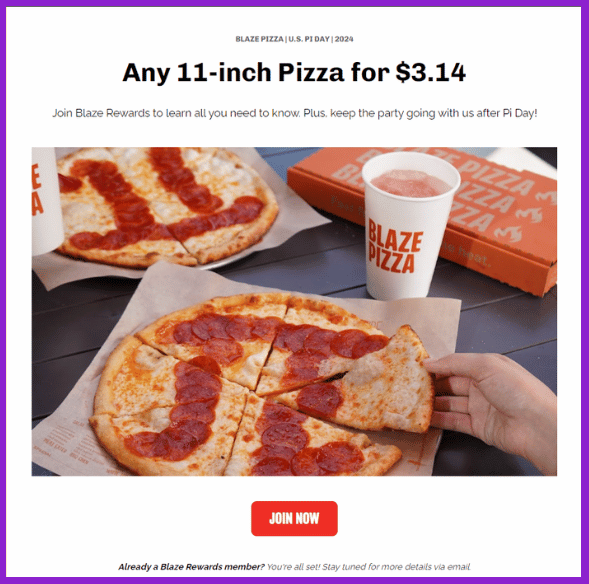
This promotion, shared widely on social media and through local marketing, drew large crowds and significant media attention, boosting sales and brand awareness.
8. The Sill
Event: COVID-19 Quarantine
Strategy: The Sill, a small business specializing in houseplants, capitalized on the increased interest in indoor gardening during the COVID-19 lockdowns.
They launched the “Quarantine Plant Parent” campaign, encouraging customers to share photos of their new plant setups using a specific hashtag.
This campaign not only boosted online sales but also fostered a sense of community among their customers.
9. Beatnic
Event: Gay Pride Month
Strategy: Beatnic, which is a vegan restaurant based in New York City leveraged Gay Pride Month by partnering with Big Gay Ice Cream (an ice cream shop in the same city) and both created special vegan ice cream sandwiches.
They also partnered with a local LGBTQ+ organization, donating a portion of their sales to support these groups.
This not only drove sales but also reinforced their respective brand values and community ties.
10. The Dog Bakery
Event: National Dog Day
Strategy: The Dog Bakery capitalized on National Dog Day by launching a special campaign featuring their dog-friendly cakes and treats.
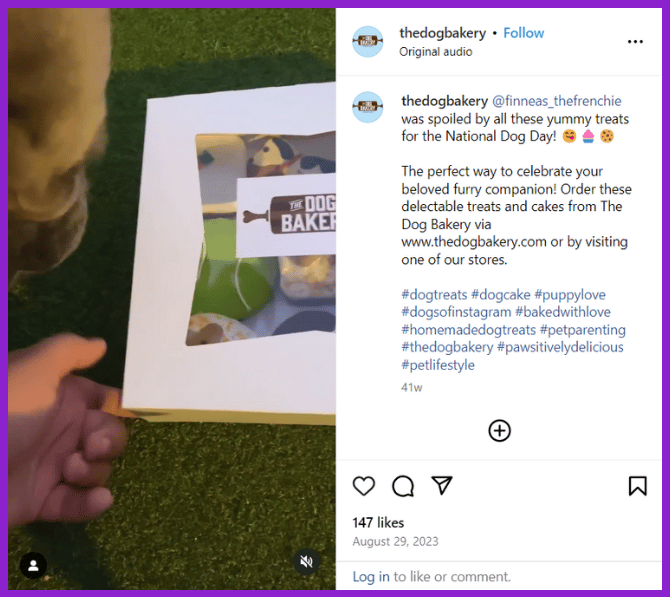
They encouraged customers to share photos or videos of their dogs enjoying the treats using a specific hashtag.
This user-generated content campaign not only drove sales but also created a strong sense of community among pet owners, significantly enhancing their brand loyalty and social media presence.
Conclusion
Moment marketing allows your small business to effectively compete with big brands in your niche by staying agile, relevant, and deeply connected to your community.
By using local events and creating authentic, timely content, you can build strong customer relationships and enhance your brand presence.
Start leveraging moment marketing today and turn everyday moments into extraordinary opportunities for growth.
Stay informed, be prepared, and make every moment count.
Do you need strategic advice on creating moment marketing or any other digital marketing campaign to build awareness for your small business?
